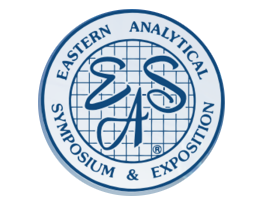One-Day Course
Wednesday, Nov. 20; 8:30am – 5:00pm
Dr. Perry G. Wang, LC-MS Technical Expert, Burtonsville, MD
COURSE DESCRIPTION
This short course is designed to offer practical training for the practicing scientists in the analytical field. Validation of analytical methods is crucial for the successful conduct of nonclinical, biopharmaceutics, and clinical pharmacology studies. This short course will focus on the FDA’s Bioanalytical Method Validation – Guidance for Industry published in May 2018 using LC-MS/MS. It will take the participants step-by-step through the concepts and techniques to validate bioanalytical methods. The emphasis is on practical issues associated with the bioanalytical method validation. The participants will learn the essence of the method validation. After this course, the participants will be able to independently validate their own bioanalytical methods. How to apply the validated methods for routine assay and some typical case studies will be presented as well
WHO SHOULD ATTEND
This short course will benefit the analytical chemists, lab supervisors, QA/QC managers, regulators, GLP auditors and CRO consultants who work in the GLP-regulated labs and the pharmaceutical and biopharma industry. This course will also benefit all levels of management as a refresher course to stay current with the GLP regulations.
TOPICS
- Validation Guidance/Guidelines
a. ICH
b. AOAC
c. IUPAC
c. Eurachem
d. EMA
e. FDA
f. SANCO
g. Nordtest guide for measurement uncertainty - What can the Validated Methods Answer
a. Does the method measure the intended analyte?
b. Does anything interfere with the measurement?
c. Is the method specific or selective for the analyte?
d. What is the variability associated with these measurements? – what are the accuracy and precision of the method?
e. What is the LLOQ? What is the ULOQ?
f. How do sample collection, handling, and storage affect the reliability of the data
g. Do the samples need to be frozen during shipping?
h. What temperatures are required to store the samples, and how long can the samples be stored? - Bioanalytical Method Validation
a. How to design an accuracy & precision run
b. What are the acceptance criteria for an A&P run
c. Requirements for accuracy, precision, recovery, selectivity and specificity
d. How to design a calibration curve – LLOQ, ULOQ and weighting factor
e. How to prepare quality control (QC) samples
f. Acceptance criteria for standards and QCs
g. How to design selectivity and specificity tests
h. How to design matrix effect and recovery tests
i. How to design dilution effect tests
j. How to design stability tests for autosampler, benchtop, extracted samples, stock solution and long-term storage
k. When do I need partial or cross validation
l. How to report bioanalytical method validation - Apply the Validated Methods for Routine Bioanalysis
a. Recommendations for routine drug analysis
b. Design an analytical run/batch
c. How to arrange samples – by subject or by period?
d. Evaluation of LLOQ, ULOQ and QCs
e. Criteria to approve or reject results
f. Evaluation of unknown study samples
g. Deviations and remedial actions
h. Re-assay and incurred sample reanalysis (ISR)
i. How to select re-assay results
j. How to report bioanalytical data - Case Studies and GXP Discussion
a. Validation bottleneck and challenges
b. How to measure and minimize matrix effects
c. How to harmonize the various global bioanalytical guidance documents
d. How to deal with urine samples
e. How to improve the throughput

ABOUT THE INSTRUCTOR
Dr. Perry G. Wang has been a chemist at US FDA since 2008. Prior to joining the FDA, he worked in the pharmaceutical and medical-device industry. He received his Ph.D. from Oregon State University. He specializes in LC-MS/MS method development and validation for drugs, cosmetics, foods, and dietary supplements. His expertise focuses on high throughput drug analysis. He has been invited to teach this course at ASMS since 2015. He teaches these courses in his own capacity as a scientist, but not as an employee of the FDA

